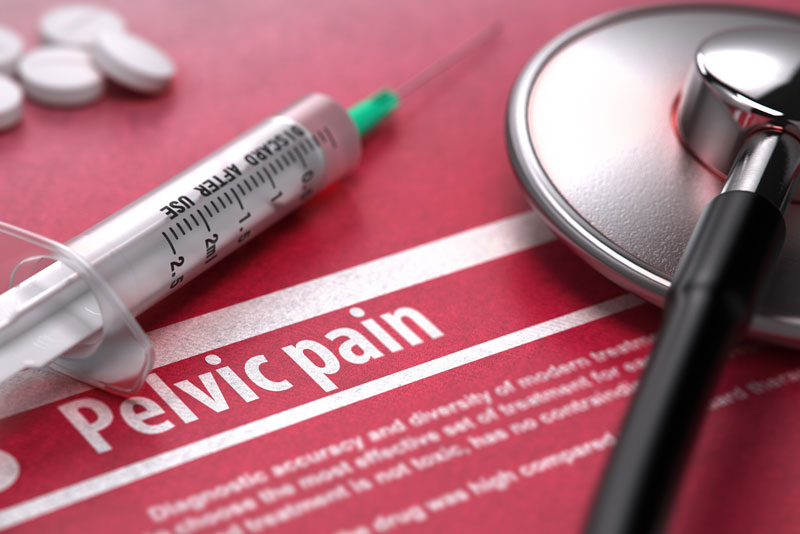Chronic pelvic pain refers to pain in the pelvic area that lasts for at least 6 months. This pain is a common condition in women. Several conditions ranging from disorders in the gastrointestinal tract to gynecologic diseases and urologic abnormalities can produce chronic pelvic pain in women. For providers, often it is hard to figure out the source of the pain. They rely mostly on imaging tests to diagnose the condition. Radiology medical billing involves clear documentation of the condition in medical claims, which is critical to get on-time reimbursement. Advancements in radiology imaging and therapeutic procedures make it easy for providers to diagnose the conditions producing chronic pelvic pain accurately in most women and to guide effective treatment.
Pelvic congestion syndrome (PCS) is a major reason for chronic pelvic pain. PCS is associated with ovarian vein varicosities. Varicose veins can form below the abdomen within the pelvic region. Other causes of chronic pain in pelvic area are related to conditions such as endometriosis, adenomyosis, interstitial cystitis, pelvic inflammatory disease, irritable bowel syndrome, uterine fibroids, levator syndrome, vulvodynia, pelvic support problems or even any psychological causes such as depression, anxiety, substance abuse or stress. Some of the less common causes of pelvic pain include ovarian remnant, cervical cancer, ovarian cancer, or even radiation treatments. Some of these conditions are easy to diagnose, while others extremely difficult to recognize.
Some of the symptoms of pelvic pain include painful bowel movements, persistent lower-back pain, bloating in abdomen, discomfort when urinating, irregular or missed periods, fatigue, fever and nausea and unusual bleeding in vagina.
Medical Codes to Report
Common causes of pelvic pain can be reported in medical claims using relevant ICD-10 and CPT codes.
ICD-10 Codes
- I86.2 Pelvic varices
- I87.2 Venous insufficiency (chronic) (peripheral)
- N94.89 Other specific conditions associated with female genital organs and menstrual cycle
- R10.2 Pelvic and perineal pain
- G89.0 Central pain syndrome
- G89.29 Other chronic pain
- N94.10 Unspecified dyspareunia
- N94.11 Superficial (introital) dyspareunia
- N94.12 Deep dyspareunia
- N94.19 Other specified dyspareunia
- N94.2 Vaginismus
- N94.4 Primary dysmenorrheal
- N94.5 Secondary dysmenorrheal
- N94.6 Dysmenorrhea, unspecified
- N94.810 Vulvar vestibulitis
- N94.818 Other vulvodynia
- N94.819 Vulvodynia, unspecified
CPT Codes
- 37241 Under Vascular Embolization and Occlusion Procedures on Arteries and Veins
- 36012 Under Intravenous Vascular Introduction and Injection Procedures
- 75894 Under Transcatheter Diagnostic Radiology (Diagnostic Imaging) Procedures
- 90901 Under Biofeedback Services and Procedures
- 97161-97164 Under Physical Therapy Evaluations
- 97014 Under Supervised Physical Medicine and Rehabilitation Modalities
- 97032 and 97039 Under Constant Attendance Physical Medicine and Rehabilitation Modalities
- 97110, 97112 and 97140 Under Physical Medicine and Rehabilitation Therapeutic Procedures
CPT code 75894 should not be billed in conjunction with 37241, as 75894 is considered a component of 37241. Also CPT code 36012 may be billed in conjunction with 37241 for treatment of pelvic congestion syndrome in females.
For many women with pelvic pain, a definitive diagnosis is quite long and laborious. Radiologists knowledgeable about the clinical, pathologic, and radiologic characteristics of the underlying causes of pelvic pain will be able to make an accurate diagnosis in most cases, which facilitates proper treatment.
Risk factors for pelvic pain include anatomic variants, pregnancy, pelvic surgery, estrogen therapy, obesity, phlebitis, prolonged standing or heavy lifting. To diagnose the pain related condition, tests such as Pelvic ultrasound (US), MRI, CT, ultrasound (US) and/or computed tomography (CT) scan may be recommended. Other procedures include laparoscopy, cystoscopy, colonoscopy or sigmoidoscopy.
Gastroenterologists and urogynecologists treat pelvic pain with medications like pain relieving drugs (acetaminophen, non-steroidal anti-inflammatory drugs, tricyclic antidepressants), physical therapy (acupuncture, acupressure, and nerve stimulation therapies) and nutritional therapy. If other treatment options are not effective, surgery will be recommended. Pain rehabilitation programs that combines medical and psychiatric aspects is also recommended in certain cases.
Radiologists and medical specialists diagnosing and treating chronic pelvic pain can rely on professional medical billing and coding companies to submit clean claims, and receive accurate and timely reimbursement.

Get a Free Billing Analysis! Call (800) 670-2809 !


